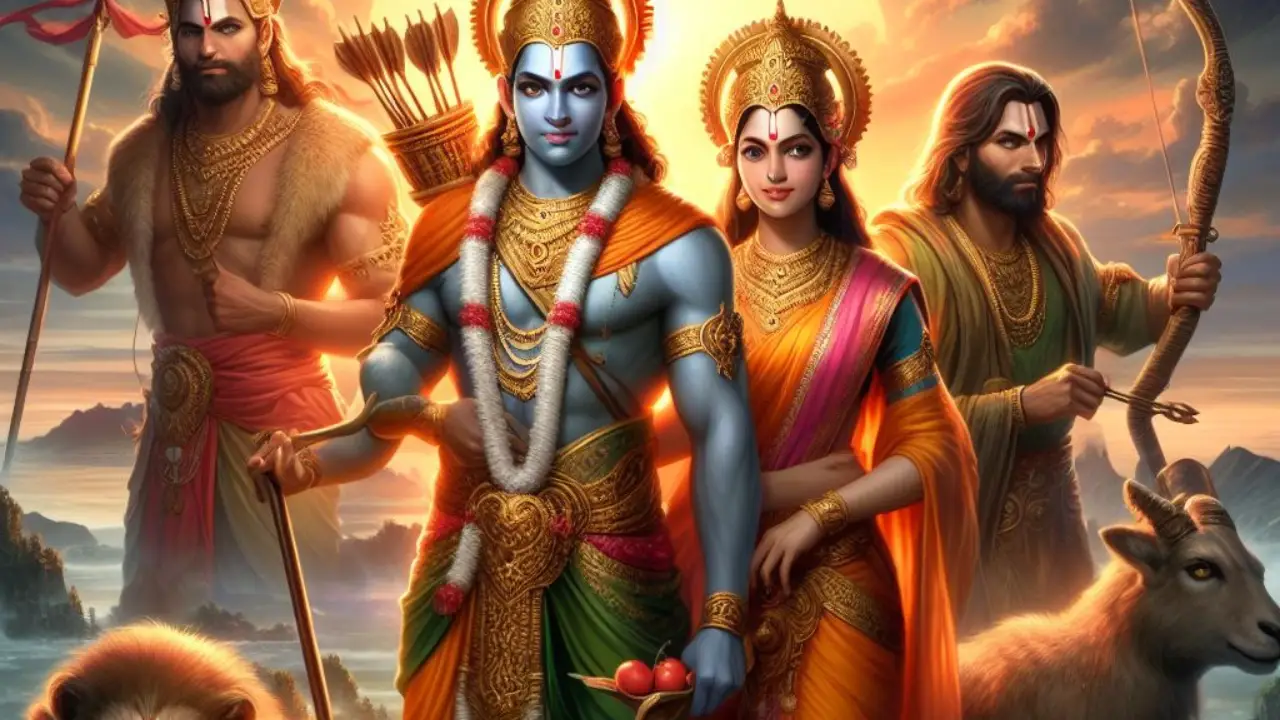The histories of Hindu mythology are rich with stories, but few are as captivating as the tale of Lord Rama. His story, part of the ancient Indian epic ‘Ramayana’, penned by the sage Valmiki, has mesmerized readers for centuries. Let us embark on this journey, exploring each facet of Rama’s life and its relevance today.
Rama: A Paragon of Human Virtues
Rama, the prince of the ancient city of Ayodhya, is an epitome of human virtues. He is a beacon of righteousness, truth, and moral strength. His life’s journey, marked by trials and tribulations, serves as a guide on living a life of honor and dignity. Rama’s embodiment of these virtues makes him an enduring symbol of ideal behavior.
The Pain of Exile: Triumph of Spirit over Adversity
Rama’s life takes a dramatic turn when he is exiled to the forest for 14 years. This exile, a result of palace intrigue and his stepmother’s ambition, tests his character to its core. In accepting this fate, Rama displays profound resilience. His ability to endure hardships without bitterness is a lesson in facing life’s challenges with strength and grace.
Sita: A Central Figure in Rama’s Journey
The narrative of Lord Rama is incomplete without mentioning Sita, his devoted wife. Her abduction by the demon king Ravana is a pivotal moment in the epic. Sita’s unwavering faith in Rama during her captivity in Lanka is as significant as Rama’s quest to rescue her. Her strength and purity elevate the story from a tale of adventure to one of profound love and devotion.
The Power of Friendships: Allies in Adversity
Rama’s journey highlights the importance of friendships and alliances. His bond with Hanuman, the monkey god, and the Vanara army is central to his mission. The loyalty and bravery of his allies, especially in building the bridge to Lanka and during the great battle, illustrate the strength found in unity and loyalty.
The Ultimate Battle: Symbol of Righteousness
The battle in Lanka is not just a clash of armies; it represents the eternal struggle between good and evil. Rama, armed with divine weapons and moral righteousness, faces Ravana in a battle that has come to symbolize the triumph of good over evil. This victory underlines the principle that, ultimately, righteousness prevails over malice.
Return and Rule: The Ideal King
Rama’s return to Ayodhya and his subsequent coronation as king mark the happy ending of his arduous journey. His rule is characterized by peace, prosperity, and justice, epitomizing the ideal governance. This period, known as Ram Rajya, is often cited as a benchmark for good governance and ethical leadership.
The Timeless Relevance of Rama’s Story
Rama’s story, while ancient, holds timeless relevance. His life teaches us about duty, resilience, and the importance of moral integrity. In a world where ethical dilemmas are commonplace, Rama’s journey offers a compass for right conduct and decision-making.
Rama’s Legacy in Art and Culture
The impact of Rama’s story extends beyond religious texts. It has influenced art, culture, and literature for centuries. From classical dance forms to modern-day films, the narrative of Rama has been retold in countless ways, each adaptation adding a new layer to this rich epic.
Reflections on Modern Life
In our fast-paced, modern world, Rama’s story is a reminder of the enduring values of patience, loyalty, and virtue. These timeless principles can guide us in navigating the complexities of contemporary life.
Embracing the Wisdom of Rama’s Journey
Lord Rama’s tale is not just a chapter in a religious epic; it is a source of wisdom and inspiration. His journey, with all its highs and lows, offers profound lessons for all, regardless of background or belief.
How does Lord Rama’s journey inspire you? What aspects of his story resonate with your personal experiences? Share your insights and reflections in the comments. Let’s delve into the richness of this ancient saga and discover its relevance in our lives today.

